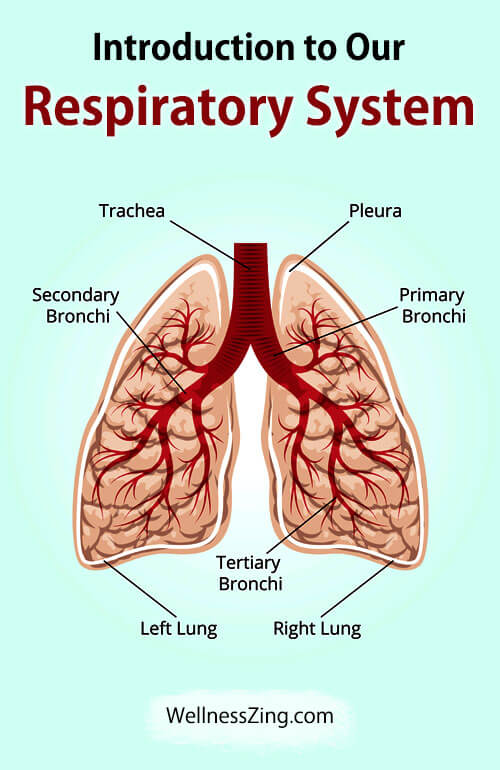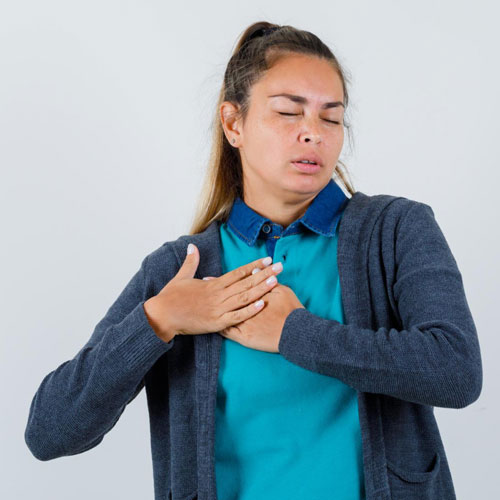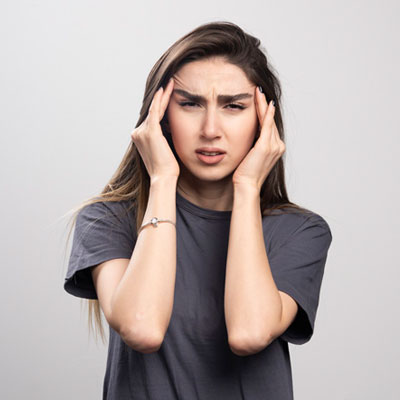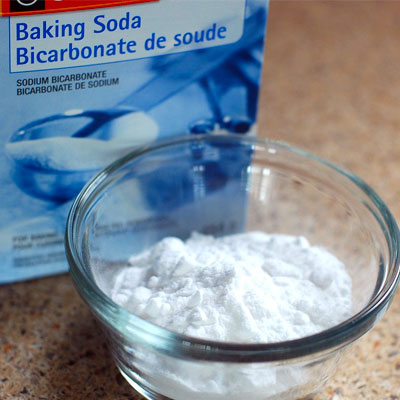We are alive because we breath! Of course Respiration is one of the most important functions of the body. A lot of people take it for granted. Healthy lungs expand easily while inhalation and takes in a lot of oxygen. This helps blood to circulate adequate oxygen to all the parts of the body. On exhalation, they release the waste carbon dioxide from the system efficiently. Specially during today’s pandemic times we should take extra care of our lungs and get rid of respiratory problems.
Lungs are extremely vital organs that help in performing day to day activities. People, who do not have strong lungs, tends to suffer from respiratory problems like shortness of breath especially while doing activities that exerts pressure on their lungs and heart. This guide will give you complete information about types of respiratory problems, their causes and treatment.
About the Respiratory System

Before we talk about the respiratory problems in the body, let us first understand about the respiratory system. The lower end of respiratory system comprises of the trachea or windpipe that divides into a set of bronchial tubes.
These tubes go into lungs and split into several smaller branches known as bronchioles. Tiny air sacs called “alveoli” stems from narrowing branches. These sacs are surrounded by blood vessels that helps in flow of oxygen and carbon dioxide between the bloodstream, and lungs.
Common Causes of Respiratory Illnesses
Following are some of the causes that can lead to development of respiratory ailments in a person.
- Smoking
- Autoimmune conditions
- Environmental conditions like air pollution and pollen allergies
- Genetic
Symptoms of Respiratory Illnesses
People who suffer from respiratory condition shows following symptoms.
- Shortness of breath at the time of doing any physical activity
- Insistent cough
- Wet cough with mucus in cystic fibrosis, COPD and asthma
- Dry cough in pulmonary fibrosis
- Tightness in Chest
- Quick, and shallow breathing
- Recurrent respiratory tract infections, and
- Fatigue
Types of Respiratory diseases and Respiratory Problems
Infection, or chronic conditions can deteriorate the functioning of the respiratory system in the body. Chronic lung ailments are mainly categorized into two major categories that includes restrictive, and obstructive. People who have weak lungs and defense mechanism are suspectable to infectious inspirational conditions. Let us see more about these types in detail.
A. Obstructive Conditions
Obstructive lung ailments are referred to as narrowed, or blocked air passage that makes it hard for the lungs to obtain fresh air for old air.
1. COPD or Chronic Obstructive Pulmonary Disease
COPD is viewed to be one of the most life-threatening ailments that affects eleven million adults on a yearly basis. It is an irreversible disease that includes emphysema, and chronic bronchitis. In case of emphysema, the “alveoli” gets damaged, and in case of chronic bronchitis, the elasticity of air sacs, and airways is reduced due to inflammation in the walls of the airways. This condition also blocks the lungs by filling it with excess amounts of mucus.
One of the causes for the occurrence of this disease is Alpha-1 antitrypsin deficiency. It is a hereditary condition that makes people prone to liver, and lung related ailments. Alpha-1 antitrypsin is a type of protein that is secreted by the body to safeguard several vital organs from destruction caused by the defense mechanism of the body. The low amounts of this protein result in the occurrence of this disease. Smoking is the second main cause for the occurrence of this disease.
Some of the commonly seen symptoms of COPD are breathlessness, presence of mucus from the lungs, inability to perform activities on a daily basis. This disease begins in the age of 30s or 40s and rises during 50s, 60s and 70s.
Treatment for COPD involves:
- bronchodilator therapy where the patient is given medication to open the airways
- cessation of smoking
- pulmonary rehabilitation, is an exercise program that is conducted in presence of a qualified doctor
2. Asthma
Asthma is another very common severe respiratory disease that affects children, and adults throughout the world. This condition begins in childhood years and goes till adulthood. It is a reversible obstructive form of lung disease. In Asthma, a person finds it hard to breathe. In some cases, the disease goes away on its own, and reappears later. In majority of cases, a person has to live with this condition for throughout the life.
Asthma is a reactive airway ailment that is caused due to inflammation of the air passage. This happens in response to triggers that includes dust, pollen, stress, chemical fumes, and cold weather.
Some of the symptoms of this disease are dry cough, tightness in chest, wheezing, and shortness of breath. Environmental allergies have a major connected with asthma. Allergic reactions, pollution, and infections can all initiate an asthma attack. The best treatment for persistent asthma is anti-inflammatory medication and a rescue inhaler that helps to open airways quickly.
3. Cystic fibrosis
This is a hereditary condition that is caused due a faulty gene that causes formation of mucus in organs, that includes lungs. It causes them to become sticky, and thick. This condition clogs up passageways, and tubes in the body. This mucus causes risky, and recurrent lung infections, and hindrances in the pancreas that stops vital enzymes to break down nutrients for the body. Women are more impact by this disease than men.
Symptoms of this condition are poor development in children, severe cough, frequent infections in lungs, inflammation, failure of respiratory system, and infections.
4. Pleural Effusion
In this condition, the fluid gets collected between the walls of chest, and lung. There are several reasons for this condition. Some of them being pneumonia, congestion in heart, and cancer.
Patients who suffer from this condition, complaints of increasing discomfort in chest and shortness of breath. The treatment involves removal of the fluid that enables the lung to expand. This results in comfortable breathing in the person.
5. Emphysema
Emphysema is an acute form of respiratory ailment that is caused due to smoking. People who suffer from this condition experience difficulties in respiring air from the lungs. Smoking causes severe damage to the air sacs that they become impossible to repair. As the condition causes respiratory failure, a patient is provided extra oxygen to fulfill his breathing requirement.
6. Lung Cancer
Lung cancer is the leading causes of cancer death in men as well as women in the U.S. This condition can result in inflamed respiratory system. It has the potential to affect any part of the lungs. It is difficult to diagnose. DNA alteration in the lungs is responsible for causing cells to grow in an uncontrolled fashion. This results in tumors that hinders with the normal operation of the lungs.
The major cause behind this ailment is smoking, radiation exposure, exposure to diesel fumes, and asbestos, smoke, frequent chest CT scans, and air pollution.
A patient who suffers from this disorder would experience severe coughing, altered speech, harsh breathing sounds, and blood while coughing.
B. Restrictive Conditions
Restrictive respiratory diseases or respiratory problems are those that lowers the amount of air holding capacity of the lungs. This condition can initiate loss of elasticity or the expansion capability of lungs.
Pulmonary fibrosis
This disease is a term for over two-hundred disorders that leads to scarring and stiffening of lung tissue. It restricts function, and movement of lung in the body. Due to this disorder, it causes progressive and irreversible fibrosis, and scarring of the lungs. The result is that the lungs get smaller in size, and capacity.
Common types of diseases associated to this condition are idiopathic pulmonary fibrosis, and Sarcoidosis. In the latter condition, a person will see visible growth of small-sized inflammatory cells that impacts various organs, especially the lungs.
C. Infectious Conditions
Infectious respiratory conditions are mostly temporary, but some of them can become severe and can occur on a frequent basis.
1. Pneumonia
This condition is referred to as a lung condition that is caused due to bacteria, or virus. People who suffer from severe form of COPD are found to be more susceptible to developing pneumonia. In this condition, a patient requires one to three weeks of time to recover from it. When not treated at the right time, it can even take the life of the person.
Children, and elderly people are at high risk of developing this disease. Also, those who smoke or have low immune status are susceptible than healthy, and well-nourished adults.
Some of the symptoms of this condition are fever, cough, shortness of breath, and shaking chills. Patients who suffer from pneumonia are treated with pneumococcal pneumonia vaccine.
2. Tuberculosis
Tuberculosis is caused due to a bacterial infection that attacks the lungs as well as other areas of the body. This condition can stay in dormant stage for several years.
3. Chronic Bronchitis
Chronic bronchitis is a condition that is accentuated by a severe cough. In this condition, a person will experience deposition of mucus in the lungs mostly in morning.
The major cause behind this occurrence is the increased output in the airways, that requires a patient to spit it out in the form of cough. It is an infectious disease that develops from a bacterial, or viral infection.
This disease doesn’t stay for long-term. It is easy to treat it with the help of antibiotics. Once the infection is treated, its symptoms also subsides on its own.
4. COVID-19
COVID-19 is another respiratory ailment that is caused due to a virus called “coronavirus”. This virus is seen to infect both animals, as well as humans. It got originated in Wuhan, China. COVID-19, or coronavirus spreads from one person to another by coming in close contact to each other (within five feet distance).
It spreads through droplets that are released in the air by the infected person at the time of coughing, talking, or sneezing. The fundamental symptoms of this disease are cough, fever, and shortness of breath. As of date, there is no vaccine discovered to treat this condition. Social distancing is the only effective method to stay protected from catching this virus.
D. Diagnosis of Respiratory Problems
In order to treat any respiratory illness quickly, and appropriately, a correct diagnosis holds a lot of significance. To arrive at the right detection of the problem, the doctor will perform a thorough physical examination and review the complete family, and medical history of a patient.
He will learn about any adverse lifestyle habit that includes childhood asthma, smoking, and other signs to arrive at the right conclusion. He may also advise you some diagnostic tests for early recognition of symptoms. These tests are required for the accurate identification, self-management and development of medical treatments strategies for the quick restoration of breathing in a person.
- Chest X-ray. This test helps in determining any signs related to lung ailments such as COPD, lung cancer, and cystic fibrosis.
- CT scan. This scan is beneficial for the identification of the form of fibrosis present in the lung region.
- PFT or Pulmonary function test. This test is done to measure the capacity, and volume of lungs, rate of airflow, and gas exchange.
- Bronchial provocation. Asthma patients, requires specialized form of PFTs like Bronchial provocation where in an aerosolized drug named “methacholine” is used to cause irritation in the lungs. This is one of the ways to record a reduction in lung function in asthma patients.
- Pulse oximetry. This is a non-invasive test that uses a device called a “pulse oximeter” that helps in the measurement of the levels of oxygen of the blood. The test also tells about oxygen saturation.
- Arterial blood gas. This test is performed to determine content of carbon dioxide, oxygen, and other forms of respiratory-linked measurements. Your doctor will take a blood sample from the artery to perform the test.
- Alpha-1 antitrypsin blood test is performed to identify any deficiency of ATT in the blood.
- This test is carried out to diagnose lung disorders. Your doctor will use a flexible tube named “bronchoscope” for this purpose.
- Lung cancer screening. It is a low-dose CT scan that detects lung cancer in initial stages of its development.
Treatments for Respiratory Problems
Based on the above tests, and your complete medical history, your doctor will come up with a comprehensive treatment to treat your existing respiratory illness. The medications that he will prescribe can include a wide collection of inhalers, intravenous treatments, and oral drugs.
- To treat this condition, your doctor may prescribe nebulizers, and inhalers. These two methods are the most effective ways to treat short-term asthma. Long-term asthma is treated with medications such as corticosteroids, and leukotriene modulators.
- Based on the symptoms, and severity of the disease, inhalers, oral medications, injections and nebulizers are used for the treatment of COPD.
- Idiopathic pulmonary fibrosis. This condition is treated by two oral medications such as pirfenidone and nintedanib.
- Alpha-1 antitrypsin deficiency: Alpha-1 supplements are provided functionally to overcome the deficiency of this protein in the body.
- Cystic fibrosis. Trikafta, a combination of three medicines is used as a breakthrough therapy to treat this genetic condition.
- Smoking cessation. Long term smokers are treated with the help of counseling, and medications.
- Supplemental oxygen. Additional supply of oxygen is helpful to deliver adequate amount of oxygen to the body. This method helps a patient to relieve from symptoms of pulmonary fibrosis, and advanced COPD respiratory disease.
- Interventional bronchoscopy. It is a minimally invasive method performed to treat chronic asthma, emphysema, and lung tumors.
- Lung transplant is important for patients who suffer from acute form of progressive conditions. It is beneficial when performed in the early stages of idiopathic pulmonary fibrosis.
Conclusion
Respiratory problems have become very common throughout the world. Genetics, work place conditions, environmental exposures, smoking etc. can all contribute to playing a significant role. Quick diagnosis, and treatment of the problem along with adopting a healthy lifestyle will help in effective resolution of the ailment.
If you liked this post, then do share it with your friends on social media. Also, you can write to us any of your queries, suggestions, and comments. We will be happy to address them soon.


















